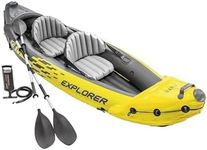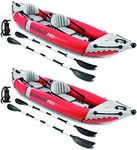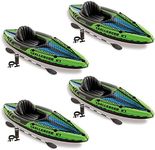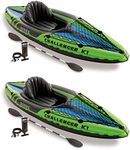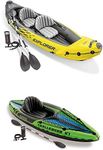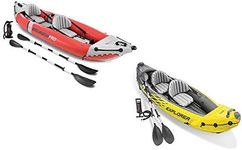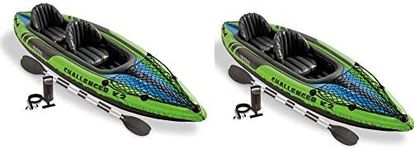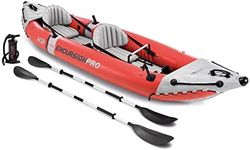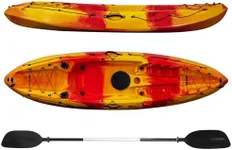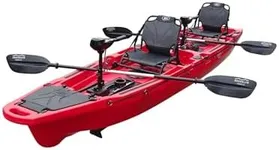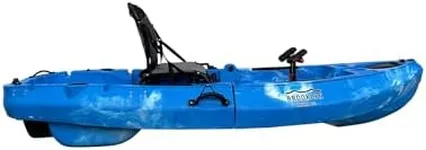Buying Guide for the Best Intex Inflatable Kayaks
Choosing the right inflatable kayak can greatly enhance your water adventures, whether you're planning a leisurely paddle on a calm lake or an exciting trip down a river. Inflatable kayaks are known for their portability, ease of storage, and versatility. When selecting an inflatable kayak, it's important to consider several key specifications to ensure you get the best fit for your needs. Understanding these specs will help you make an informed decision and enjoy your time on the water to the fullest.MaterialThe material of an inflatable kayak is crucial for its durability and performance. Common materials include PVC, Hypalon, and Nitrylon. PVC is lightweight and affordable, making it a popular choice for casual users. Hypalon is more durable and resistant to UV rays and chemicals, ideal for frequent use and rough conditions. Nitrylon is eco-friendly and offers good abrasion resistance. Choose a material based on how often you plan to use the kayak and the type of water conditions you'll encounter.
Weight CapacityWeight capacity refers to the maximum weight the kayak can safely carry, including passengers and gear. It's important to choose a kayak with a weight capacity that exceeds your combined weight to ensure stability and performance. For solo paddlers, a capacity of 200-300 pounds is usually sufficient. Tandem kayaks should have a higher capacity, typically 400-600 pounds. Consider your weight and the gear you'll bring along to select the right capacity for your needs.
Length and WidthThe length and width of an inflatable kayak affect its speed, stability, and maneuverability. Longer kayaks (12-16 feet) are faster and track better, making them suitable for open water and long-distance paddling. Shorter kayaks (8-12 feet) are more maneuverable and easier to handle, ideal for rivers and tight spaces. Wider kayaks offer more stability, which is great for beginners and calm waters, while narrower kayaks are faster and better for experienced paddlers. Choose based on your skill level and the type of water you'll be navigating.
ChambersInflatable kayaks are divided into multiple air chambers for safety and stability. If one chamber gets punctured, the others can keep the kayak afloat. Most kayaks have 2-3 main chambers, but some high-end models may have more. More chambers generally mean better safety and stability, but they can also make inflation and deflation more complex. For general use, 2-3 chambers are sufficient. If you plan on tackling rougher waters, consider a kayak with more chambers for added security.
Inflation TimeInflation time is the amount of time it takes to fully inflate the kayak. This can vary based on the size of the kayak and the type of pump used. Hand pumps are slower but more portable, while electric pumps are faster but require a power source. Typical inflation times range from 5 to 15 minutes. If you value convenience and quick setup, look for kayaks with shorter inflation times. For those who don't mind a bit of extra effort, longer inflation times can be acceptable.
AccessoriesAccessories can enhance your kayaking experience and include items like paddles, seats, footrests, and repair kits. Some inflatable kayaks come with these accessories included, while others require you to purchase them separately. Consider what accessories are important to you and whether they are included with the kayak. For example, comfortable seats and adjustable footrests can make long paddling sessions more enjoyable. A repair kit is essential for quick fixes on the go. Choose a kayak that offers the accessories you need for a comfortable and safe experience.
